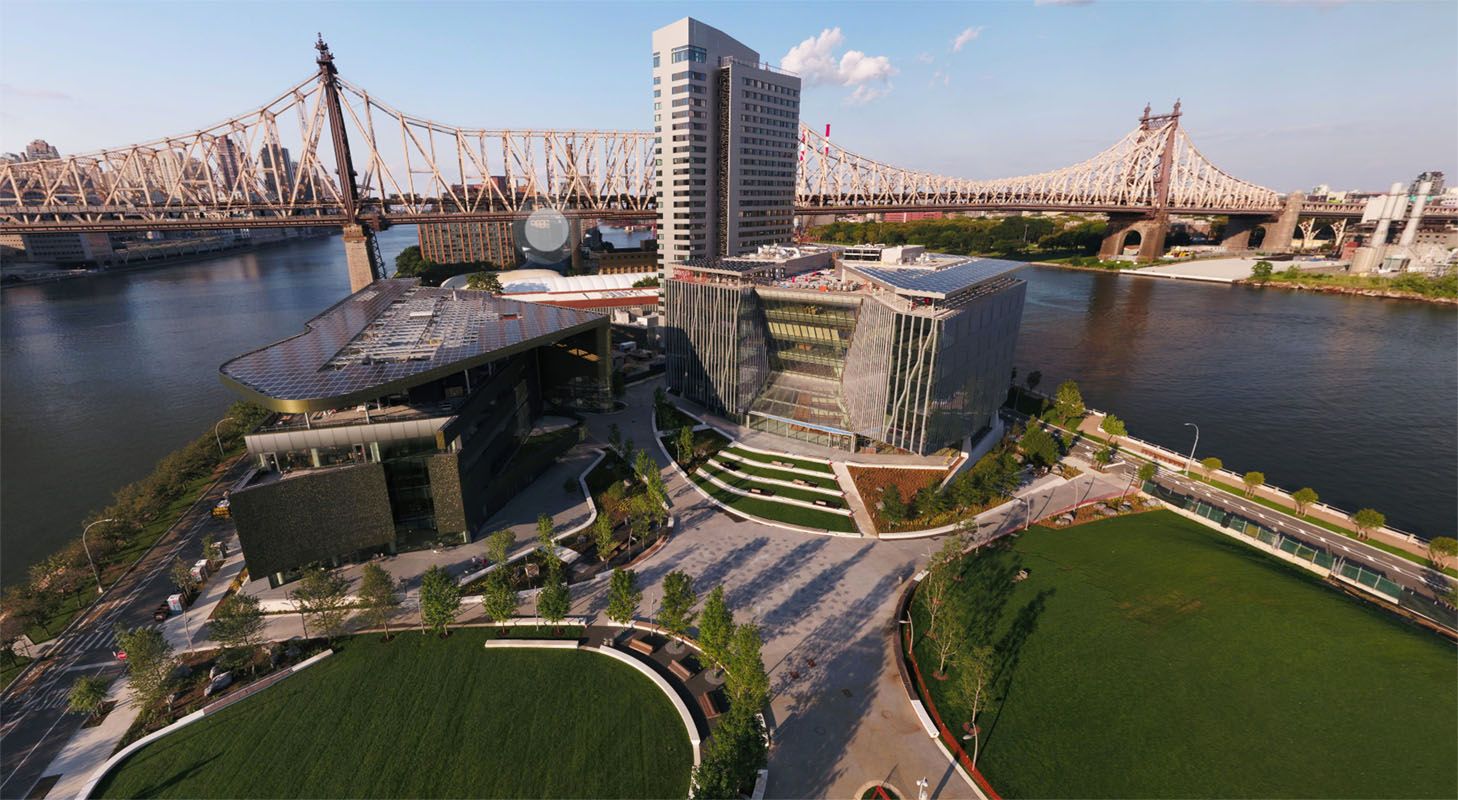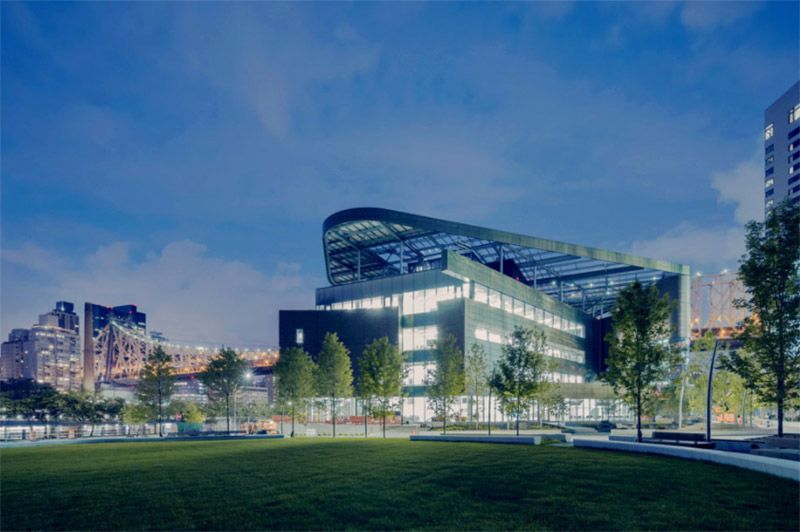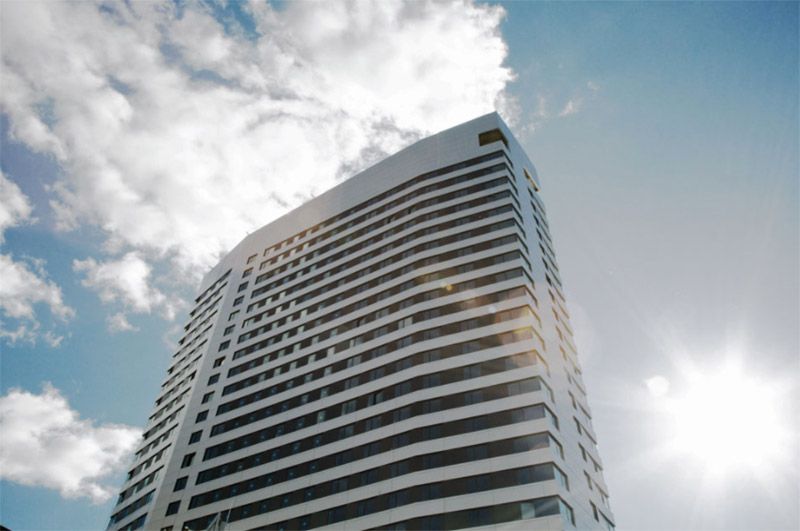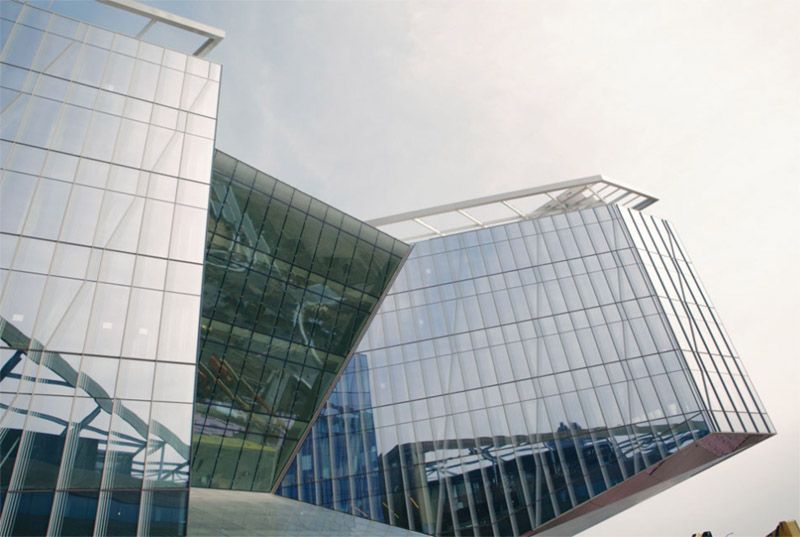Last Chance to Catch NYC's Holiday Notalgia Train
We met the voices of the NYC subway on our nostalgia ride this weekend!



Image Courtesy of Nova Concepts/Cornell Tech
Roosevelt Island may only span 150-acres, but it’s now home to a “new kind of urban campus”: Cornell Tech. The science and technology-focused university, which was dedicated Wednesday, was born out of a 2010 competition that called for the development of an applied sciences campus within the five boroughs. Columbia University and Stanford were among the bidders, but Cornell University, in partnership with Technion-Israel Institute of Technology, claimed the $100 million and a plot of city-owned land on Roosevelt Island to build the campus — ultimately intended to rival the Silicon Valley tech hub.

Since 2012, Cornell Tech — with its 30 faculty members and a student body of 300 — has operated out the Google Building in Chelsea. According to The New York Times, this will be the first academic year the institution will have its own home, where it will offering both masters and Ph.D. programs in fields like information science, computer engineering and health tech to law and business.
What’s so exciting about our campus is that it’s built for integration across the fields and disciplines,” says Deborah Estrin, the associate dean and director of the MS in Health Tech program. “…and we all sit and share open space where you just get a
lot of collisions of ideas and of people.”The campus, which will undergo two other major phases of construction, is currently comprised of three, “environmentally conscious” buildings: the “net-zero” energy main academic building, called the Emma and Georgina Bloomberg Center; the housing quarters for students and faculty, aptly called “The House,” and a center for classrooms, workspaces and commercial tenants, called “The Bridge,” owned by developer Forest City Ratner; so far, tenants include Ferrero (the maker of Nutella) and Citigroup.

The Emma and Georgina Bloomberg Center. Image Courtesy of Iwan Baan/Cornell Tech

The House. Image via Cornell Tech

The Bridge. Image via Cornell Tech
The campus sits on a 1930s-era brownfield hospital complex. The Bloomberg Center, what The Times compares to a contemporary office tower, houses three historic murals by artists Ilya Bolotowsky, Albert Swinden and Joseph Rugolo, which were salvaged from Roosevelt Island’s now demolished Goldwater Hospital.
Also notable is The House’s claim to fame as the world’s largest residential “passive house,” meaning it makes use of sophisticated shading, insulation and ventilation systems to heat and cool its interior. With these incorporated features, the building is projected to save 882 tons of CO2 per year (the equivalent of 5,300 new trees being planted).

Construction photo showing early earth-moving at the site near the southern end of Roosevelt Island

The first phase leaves lots of space for future campus expansion, which isn’t set to be complete until 2045
By 2019, the Verizon Executive Education Center and and 195-room hotel are also slated to open. In addition, Inside Highered reports that approximately two-million-square-feet of building space is expected to be constructed on the 12-acre campus when it is complete. More than 2,000 graduate students would study there.
As we previously pointed out, part of the appeal of Roosevelt Island as a construction site is its location from potential start-up capital in Midtown, Manhattan and cheap warehouse space in Long Island City.
But this idyllic location comes at a cost: there is the prospect of sea level rise and future storm activity. As a result, campus buildings are situated on a man-made earth-mound lining the center of the island.
Next, read about the secrets of Roosevelt Island and read our previous coverage of the Cornell Tech Campus on Roosevelt Island.
Subscribe to our newsletter